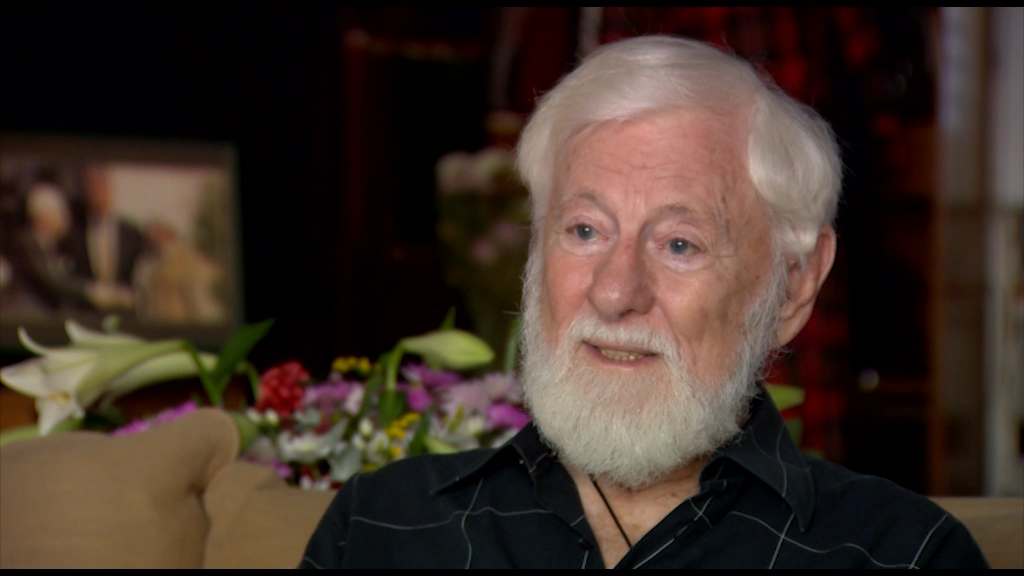NEXT STORY

HaOlam HaZeh v. IDF and the Establishment
RELATED STORIES

NEXT STORY

HaOlam HaZeh v. IDF and the Establishment
RELATED STORIES


|
Views | Duration | |
|---|---|---|---|
| 61. Saving Haaretz from closure | 13 | 02:26 | |
| 62. Running HaOlam HaZeh on a shoestring budget | 15 | 03:53 | |
| 63. My book brings me fame | 11 | 03:08 | |
| 64. Naked girls in, Ben-Gurion out | 18 | 03:51 | |
| 65. I invented the back cover | 15 | 02:49 | |
| 66. Photography was an integral part of the magazine | 13 | 03:11 | |
| 67. HaOlam HaZeh v. IDF and the Establishment | 13 | 04:53 | |
| 68. The ethnic demon | 14 | 03:16 | |
| 69. Uprising of the Mizrachi Jews | 15 | 03:09 | |
| 70. Who is the real enemy? | 17 | 03:01 |


יום אחד, אחרי שלושה-ארבעה חודשים, בא אלי בחור צעיר, צעיר ממני - כולם היו צעירים ממני - עם זקן, שאז היה מאוד לא רגיל. אני הייתי רגיל להיות בעל הזקן היחידי בסביבה. ואומר לי, צלם: "אני רוצה לעבוד ב'העולם הזה'". אמרתי: "אני חיכיתי לך, כל הזמן". שמו היה מקסים גילן, וזה למעשה היה צלם המערכת הראשון בארץ. מקסים גילן, סליחה, מקסים סולומון. משפחה פתח-תקוואית מהמייסדים. היה בחור מאוד מופרע, די בלתי-נסבל, אבל אדם שהגיע לכל מקום שהוא רצה להגיע וצלם טוב. הוא היה אתנו כמה שנים. בשבילי הצילומים ב"העולם הזה" היו חלק אינטגראלי של העיתון. עד אותו זמן היו צלמים, כאמור, פרילנסרים, שהיו מצלמים איזשהו אירוע, רצים מהר ממערכת למערכת בשביל להגיע לפני המתחרים והמערכות היו קונים ושמים אותם. כשעבדתי ב"הארץ" אני ראיתי איך זה נעשה: יושב מזכיר המערכת ובונה עמוד, ואם היו לו חורים, דחף תמונה. התפיסה שלי הייתה לחלוטין אחרת. אני ראיתי בכתבה ב"העולם הזה" מיזוג אינטגראלי של שלושה יסודות: אחד – הטקסט, שניים – הכותרת, ושלוש – התמונה או התמונות. והן היו משולבות לחלוטין. זאת אומרת, לפעמים כל הכתבה נבנתה מסביב לתמונה. לפעמים צילמנו תמונות בשביל כתבה שכבר הייתה בראש והכותרת באה למשוך קוראים, פשוטו כמשמעו. כמה שיותר צעקני, כמה שיותר מצחיקה, תמיד גדולה. וככה, לאט-לאט נבנה הסגנון של "העולם הזה”. הייתי אומר שהסגנון נבנה והושלם במהלך שנות ה-50’. בסוף שנות ה-50', כשבא משפט אייכמן, זה כבר היה קיים.a
One day, after three or four months, a young man came to me, younger than me – they were all younger than me. He had a beard which was then very unusual; I was used to being the only bearded person around. And he told me he was a photographer, 'I want to work for HaOlam HaZeh'. I said: 'I've been waiting for you all this time'. His name was Maxim Solomon and he was, in fact, the very first editorial journalist/photographer in Israel. His family was one of the founders of Petach Tikva. He was a very disturbed young man, a bit unbearable, but he managed to get in anywhere he wanted and he was a good photographer. He was with us for several years. For me, the photographs in HaOlam HaZeh were an integral part of the newspaper. Until that time there had been photographers, as I mentioned, freelancers, who would photograph some kind of event, and would then rush from one paper to another, to get in ahead of the competition, and the editorial boards would purchase them and use them. When I worked at Haaretz, I saw how it was done: the secretary of the editorial board would sit and create the column, and when there was some space, a photograph would be inserted. My perception was completely different. I perceived an article in HaOlam HaZeh as being an integration of three elements: one – the text; two – the caption, and three – the photograph or photographs. And they were completely integrated. In other words, sometimes a whole story was built around the image. Sometimes we shot photos for articles that we were already planning, and the captions were literally added to attract the readers. As 'loud' as possible, as funny as possible, always very large. And this was how, very slowly, HaOlam HaZeh created its own style. I would say that the style was structured and completed in the mid-1950s. In the late 1950s, when the Eichmann trial started, it was already a fait accompli.
Uri Avnery (1923-2018) was an Israeli writer, journalist and founder of the Gush Shalom peace movement. As a teenager, he joined the Zionist paramilitary group, Irgun. Later, Avnery was elected to the Knesset from 1965 to 1974 and from 1979 to 1981. He was also the editor-in-chief of the weekly news magazine, 'HaOlam HaZeh' from 1950 until it closed in 1993. He famously crossed the lines during the Siege of Beirut to meet Yasser Arafat on 3 July 1982, the first time the Palestinian leader ever met with an Israeli. Avnery was the author of several books about the Israeli-Palestinian conflict, including '1948: A Soldier's Tale, the Bloody Road to Jerusalem' (2008); 'Israel's Vicious Circle' (2008); and 'My Friend, the Enemy' (1986).
Title: Photography was an integral part of the magazine
Listeners: Anat Saragusti
Anat Saragusti is a film-maker, book editor and a freelance journalist and writer. She was a senior staff member at the weekly news magazine Ha'olam Hazeh, where she was prominent in covering major events in Israel. Uri Avnery was the publisher and chief editor of the Magazine, and Saragusti worked closely with him for over a decade. With the closing of Ha'olam Hazeh in 1993, Anat Saragusti joined the group that established TV Channel 2 News Company and was appointed as its reporter in Gaza. She later became the chief editor of the evening news bulletin. Concurrently, she studied law and gained a Master's degree from Tel Aviv University.
Tags: HaOlam HaZeh, Maxim Solomon, Petach Tikva
Duration: 3 minutes, 11 seconds
Date story recorded: October 2015
Date story went live: 10 March 2017